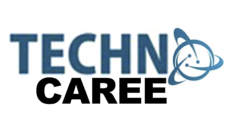Making the Best Decision for Your Needs Between Free IoT Platforms and Paid Solutions

When it comes to implementing IoT solutions, choosing the right IoT platform is crucial for success. One important decision to make is whether to opt for a free IoT platform or invest in a paid solution. Both options have their own advantages and considerations. In this blog, we will explore the key factors to consider when deciding between free and paid IoT platforms. By understanding the differences, benefits, and limitations of each option, you can make a conscious decision that aligns with your specific needs and goals for your IoT initiatives.
Exploring Free IoT Platforms
Availability and Cost
Free IoT platforms are readily available for businesses and individuals without any upfront costs. This accessibility makes them an attractive option for organizations exploring IoT solutions on a limited budget.
Core Functionality
Free IoT platforms typically offer essential features and functionalities required for basic IoT solutions. These include device connectivity, data ingestion, basic analytics, and limited scalability. They provide a foundation for IoT development and proof-of-concept projects.
Community Support
Free IoT platforms often have a vibrant user community, offering valuable resources such as forums, documentation, and tutorials. Leveraging the collective knowledge of the community can be beneficial, especially for those new to IoT development.
Advantages of Paid IoT Solutions
Advanced Features and Customization
Paid IoT solutions offer advanced features and customization options beyond what is available in free platforms. They provide comprehensive tools for device management, data analytics, real-time monitoring, and scalability. Paid solutions can be tailored to meet specific business requirements and integrate seamlessly with existing systems.
Enhanced Security and Support
Paid IoT platforms often prioritize robust security measures, including encryption, access controls, and regular security updates. Additionally, they provide dedicated customer support, ensuring timely assistance and prompt issue resolution.
Scalability and Performance
Paid IoT solutions offer scalability to handle large-scale deployments and high volumes of data. They are designed to handle increased traffic, devices, and data streams, providing superior performance and reliability. Paid platforms can support the growth and expansion of IoT initiatives seamlessly.
Factors to Consider when Making a Decision
Project Scope and Complexity
Consider the scope and complexity of your IoT project. If you have a small-scale project or a proof-of-concept, a free IoT platform may suffice. For larger and more complex projects, a paid solution may provide the necessary features, scalability, and support required.
Security and Compliance Requirements
Evaluate your security and compliance needs. If your IoT solution involves sensitive data or operates in regulated industries, a paid IoT platform with robust security features and compliance certifications may be essential to meet your requirements.
Long-term Sustainability
Consider the long-term sustainability of your IoT initiatives. Free IoT platforms may lack certain features or scalability options required as your project grows. Assess your organization’s future needs and growth potential to determine if a paid solution can better support your evolving requirements.
Total Cost of Ownership (TCO)
While free IoT platforms have no upfront costs, consider the overall TCO. Factor in additional costs such as support, maintenance, scalability, and integration requirements. A paid IoT solution may offer a more predictable and cost-effective option in the long run.
Conclusion
Choosing between a free IoT platform and a paid solution requires careful consideration of your project’s scope, security requirements, scalability needs, and long-term sustainability. Free IoT platforms offer accessibility and basic functionalities, making them suitable for small-scale projects or proof-of-concepts. On the other hand, paid IoT solutions provide advanced features, customization, scalability, and enhanced support, making them ideal for larger and more complex IoT initiatives. By evaluating your specific needs and considering the advantages and limitations of each option, you can make a conscious decision that aligns with your organization’s goals and budget.
FAQs
Q1: Are free IoT platforms less secure than paid solutions?
A1: Security levels can vary among IoT platforms, irrespective of being free or paid. However, paid solutions often prioritize security measures and provide regular updates and support, which may offer enhanced security compared to free platforms.
Q2: Can free IoT platforms handle large-scale deployments?
A2: Free IoT platforms may have limitations in terms of scalability and performance. They may not be suitable for large-scale deployments that involve a significant number of devices and high volumes of data. Paid solutions, on the other hand, are designed to handle such demands.
Q3: Do paid IoT solutions provide better customer support?
A3: Paid IoT solutions often offer dedicated customer support, ensuring prompt assistance and issue resolution. Free platforms may rely on community support, which can be valuable but may have limitations in terms of response time and expertise.
Q4: Can free IoT platforms be upgraded to paid solutions later?
A4: Some IoT platforms provide the option to upgrade from free to paid plans, allowing businesses to start with a free version and transition to a paid solution as their needs grow. However, not all platforms offer this flexibility, so it’s important to research and evaluate the specific offerings of each platform.
Q5: Are there open-source alternatives to both free and paid IoT platforms?
A5: Yes, there are open-source IoT platforms available that offer a range of features and personalization options. Open-source platforms can provide flexibility and cost savings, but they may require additional development efforts and technical expertise to set up and maintain.







